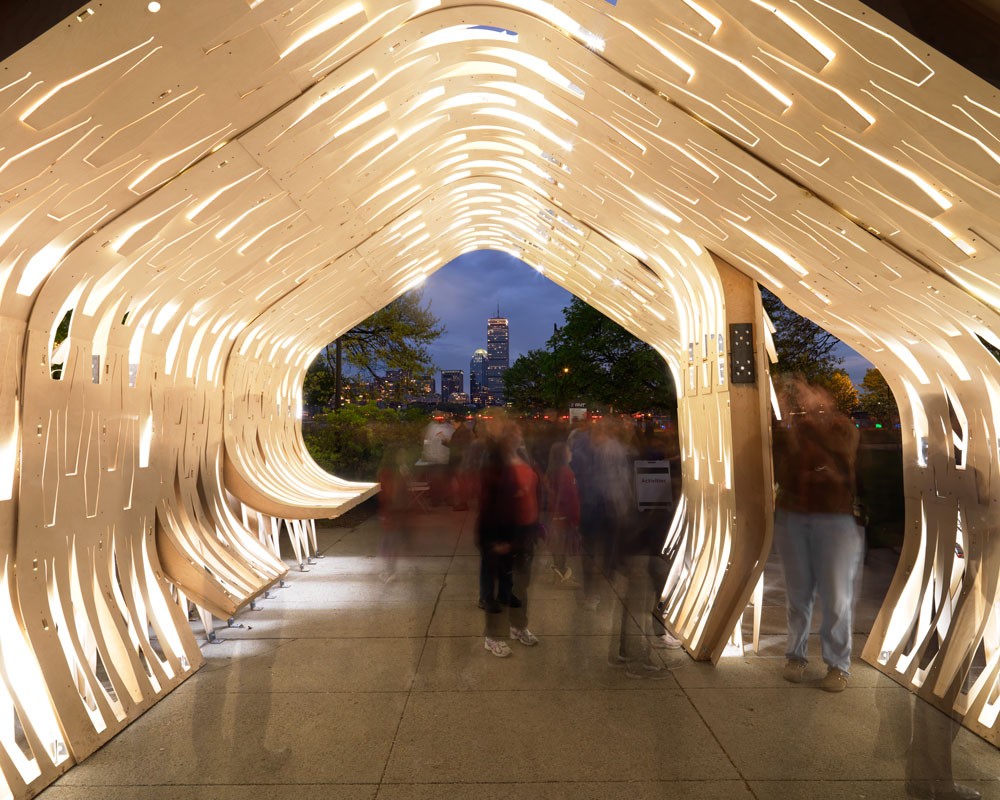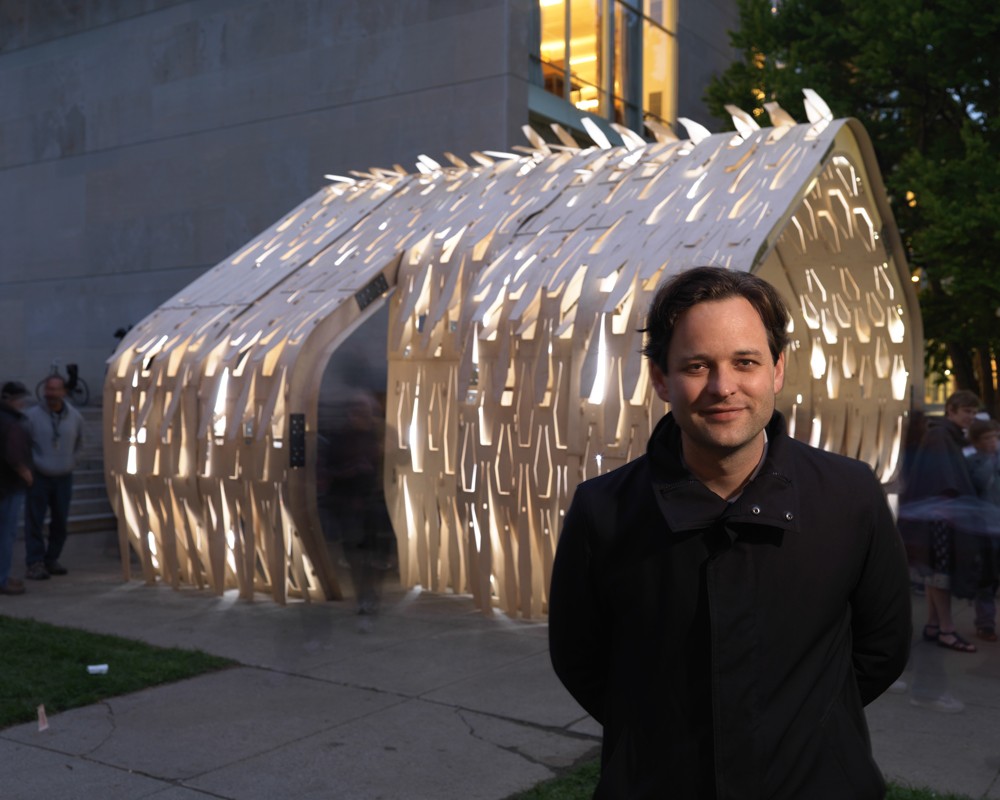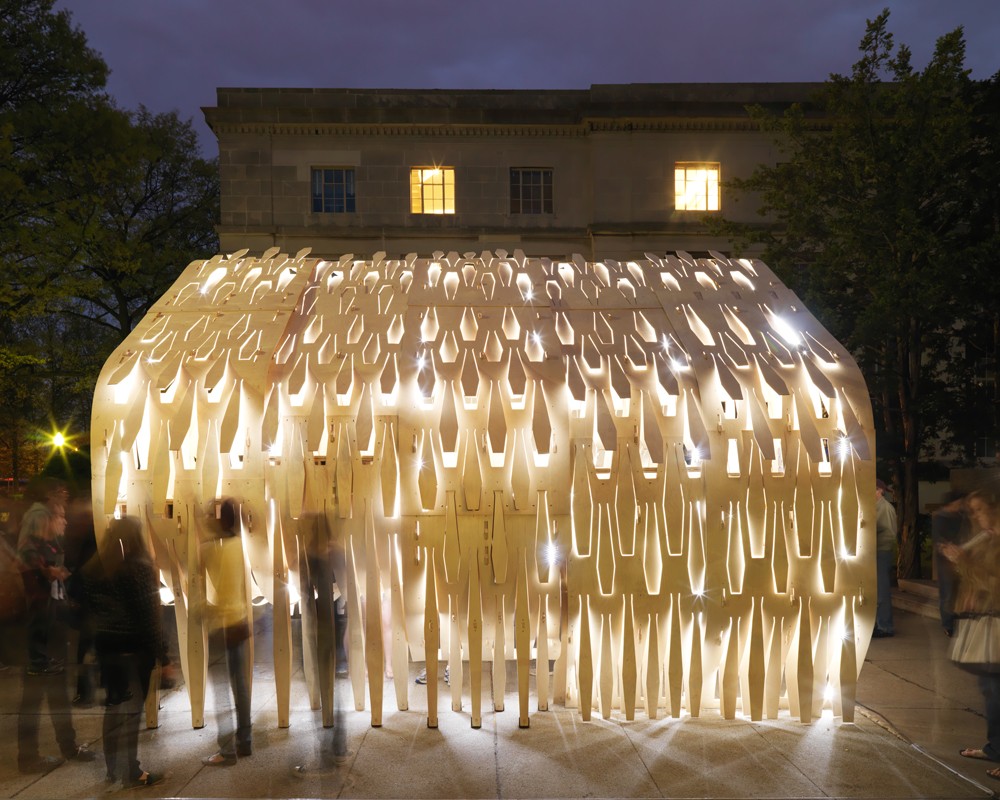Unflat Pavilion/Feather-Weight House
By Nick Gelpi, Lecturer, Department of Architecture
May 7 – 8, 2011
Building 14 Lawn
A freestanding pavilion, created by flexing two dimensions into three, this house deploys a fabrication system used to create a membrane, which is simultaneously structural, functional and representational in a single act. Entirely constructed of laminated plywood, an open pattern is cut into flat plywood stock which transforms into three-dimensional architectural features as flat sheets are bent and unfurl into skylights, columns, buttresses, windows and vents, in the act of becoming unflat.
This project demonstrates an architectural role reversal across its surface. On one elevation, a soft skin is hung on a structural frame. On the other elevation, the skin becomes structural, lifting the frame from the ground, inverting the normative structural hierarchy in an act of tectonic confusion. The project uses a promising method of fabrication with flexures, as many hundreds of parts become discrete, yet remain continuously attached to the sheet, eliminating the need for fasteners. This structure isn’t hard, heavy, bulletproof or monumental, it is modest, soft, cheap, low-tech and full of holes.
Inside the house, the walls appear porous and lightweight; its cavity illuminated with flexible LED strips attached to the interior of each sheet.

NICK GELPI |
| A Lecturer in the Department of Architecture, Nick Gelpi is interested not only in how architectural materials look, but also in how they behave. His work focuses mainly on materials, their relationship to scalar specificity and the noise produced at their intersection. He is concerned with scale’s relationship to architecture as a way of testing and engaging the world. In 2007 he received ARCHITECT magazine’s first annual R&D award; and in 2008-09, he was the Howard E. LeFevre Emerging Practitioner Fellow at The Ohio State University. In addition to teaching architectural design, he has worked with such firms as Architects, G TECTS, and Steven Holl Architects. |



